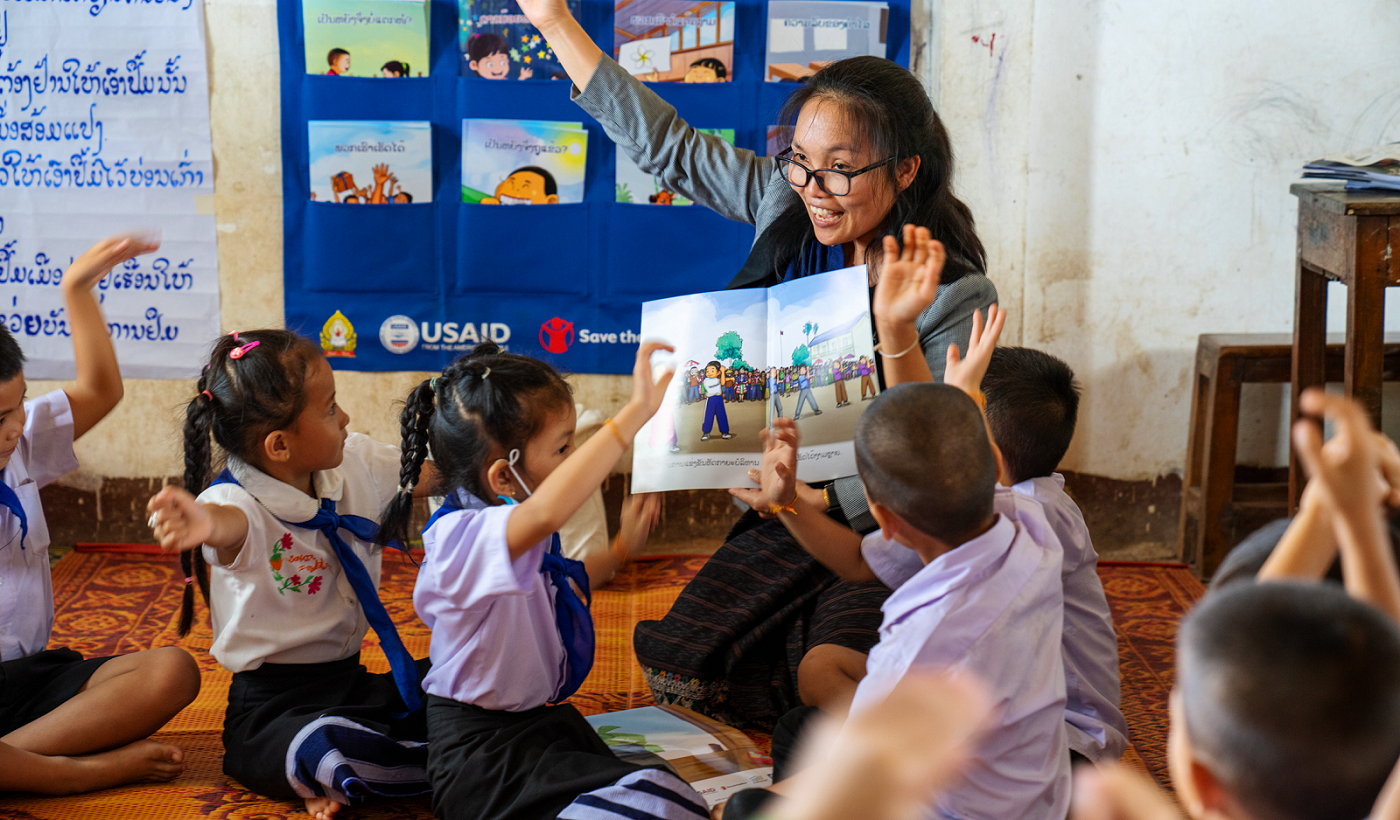U.S. Government Strategy on International Basic Education
The U.S. Government Strategy on International Basic Education 2024–2029 updates and affirms the original 2019–2023 U.S. Government Strategy and provides a framework for how and why USAID and its partners support and invest in education worldwide.
The Challenge
Too many children and youth face barriers to education and are not on track to gain the range of skills needed to thrive in school, work, and life. The 2024-2029 Strategy affirms the U.S. government’s commitment to expand access to inclusive, quality education and boost learning outcomes. This update includes strategic approaches for investments and three shared objectives. It incorporates lessons learned from the COVID-19 pandemic and emphasizes inclusive learning, particularly for those historically marginalized.

Objectives
To achieve the vision of the Strategy, U.S. agencies share three common objectives to help stakeholders increase capacity and strengthen education systems to be more inclusive and responsive to the needs of all learners and educators. These objectives can be achieved using the four approaches addressed below.

IMPROVE LEARNING OUTCOMES ACROSS THE EDUCATION CONTINUUM
To support this objective, the U.S. government will work with partner countries and diverse stakeholders to provide children with strong beginnings; improve foundational skills; and develop the capacity of youth to build the skills they need.

EXPAND ACCESS TO HIGH-QUALITY BASIC EDUCATION, PARTICULARLY FOR THE MOST MARGINALIZED
This includes strengthening education systems to be more inclusive, equitable, safe, and resilient; addressing barriers to learning, particularly in conflict and crisis; and preventing and responding to discrimination and marginalization.

COORDINATE AND LEVERAGE RESOURCES TO DRIVE RESULTS
To do so, the U.S. government will work to convene stakeholders to elevate education and drive impact beyond programs; coordinate programming to maximize results; and leverage resources to transform systems.
Strategic Approaches
The U.S. government has four strategic approaches for working with partner countries to increase capacity and strengthen education systems to be more inclusive and responsive to the needs of all learners and educators. These approaches have been designed to work in conjunction with and in support of the objectives above.
PRIORITIZE COUNTRY OWNERSHIP AND LOCALLY LED DEVELOPMENT
Programming that is driven by and responsive to local actors and priorities, and that draws on local capacities, networks, and resources, can have more impact and be more sustainable.
GENERATE AND USE DATA AND EVIDENCE TO DRIVE DECISION-MAKING AND INVESTMENTS
Robust, context-specific, and timely data and evidence are essential to improve the quality of education at the system level and the efficacy of education assistance at the programmatic level.
STRENGTHEN THE CAPACITY AND PERFORMANCE OF EDUCATION SYSTEMS
Increasing access to education and sustaining learning outcomes depends on local education systems – systems made of people, public and private institutions, resources, and activities working together.
PROMOTE EQUITY AND INCLUSION
Both in and through education, the U.S. government promotes the inclusion of underrepresented populations and those experiencing marginalization.
Featured Video
Key Resources
- Fiscal Year 2022 U.S. Government Strategy Report to Congress
- Fiscal Year 2021 U.S. Government Strategy Report to Congress
- Fiscal Year 2020 U.S. Government Strategy Report to Congress
- Fiscal Year 2019 U.S. Government Strategy Report to Congress
- Strategy Overview
- USAID Education Policy 2018
- Implementation Guidance for the USAID Education Policy